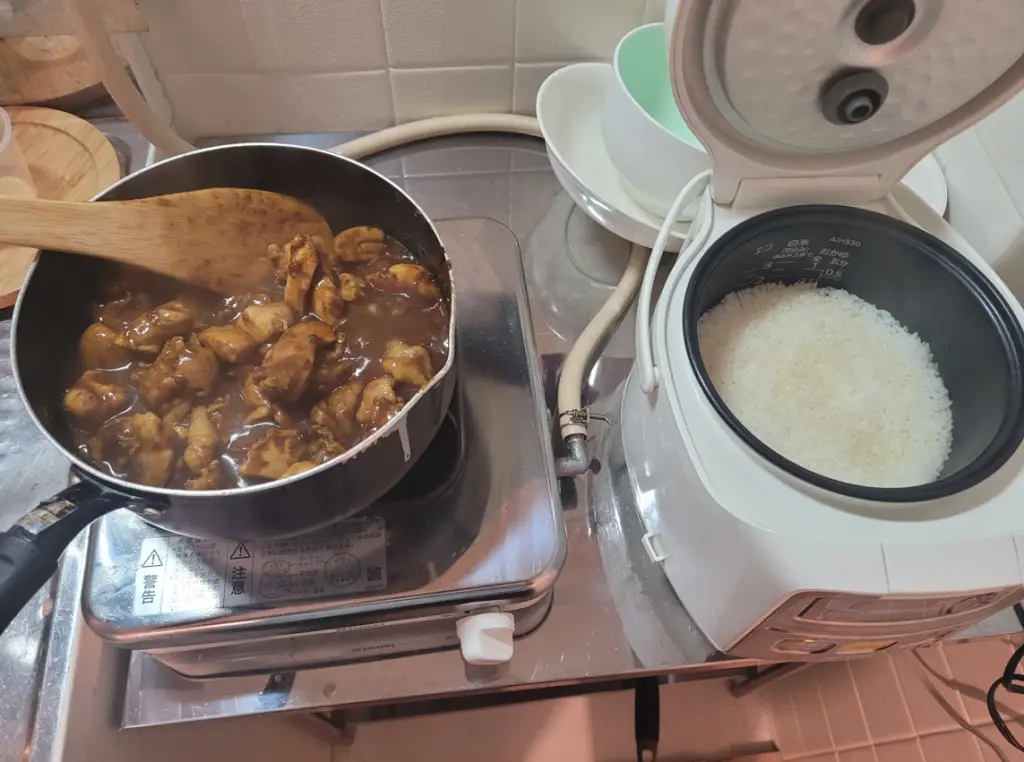If you’re staying in Japan for an extended period of time, it could be worth getting into some home cooking to save yourself some extra cash.

Home cooking can be a great way to practice your food preparation skills while saving a whole lot of money from eating at restaurants. Here are the best ways to make the most of Japan’s supermarkets to ensure you save the most money and enjoy the tastiest dishes!
Rice-Based Dishes

Perhaps the single most important kitchen tool in every Japanese kitchen is the humble rice cooker. Simply add your choice of rice with a proportionate amount of water and hot steamed rice will be on its way with the push of a button!
Rice is the foundation of so many Japanese dishes, so once you’ve got that sorted you’re half of the way there! Alternatively, you could opt for noodles as your preferred base which is prepared in a similar fashion (i.e. cooked in hot water).
Quick n’ Easy Japanese Curry Varieties

The next step is to decide what type of rice or noodle dish you want.
You would be surprised at how many Japanese dishes are compatible with both rice or noodle bases, either of which are equally simple to prepare.
By far one of the most affordable and easy recipes to make is a good old Japanese curry dish, courtesy of “Golden Curry,” the best in the business!
For just 300–400 yen (2-3 USD), you can buy a small pack of Golden Curry sauce of your choice that is enough to make a whole pot of curry (talk about savings)!
So far, I’ve tried the original Golden Curry sauce which, for the most part, is quite plain which makes it good for adding your own spices. I’ve also tried the Hayashi rice sauce which offers a more savoury kick and a roasty aftertaste.
Preparing The Protein
The next most important aspect of any meal is choosing your preferred protein.
As a nation girt by sea, it’s no surprise that Japan is abundant in seafood options ranging from salmon to tuna, crab, and prawns.
Supermarkets sell fresh sashimi which can be added to a bowl of rice and eaten on the spot.
However, if a hot saucy curry dish is your goal, you’re better off going for a protein that can be cooked (sashimi curry? No thanks!) such as crumbed or battered ebi (prawn) or some good old-fashioned chicken or beef.
For vegans, Japan is one of the best countries for accessing plant-based proteins such as tofu, soybeans, and high-protein vegetables available at all supermarkets at affordable prices.

My Favorite Recipes!

If you’ve ever been to Coco Ichibanya, you’d know how incredibly delicious their curry dishes can be, offering an abundance of toppings, proteins, and curry sauces to choose from.
At home, we’ve tried replicating this local favorite with our old Golden Curry recipe and using various ingredients as toppings.
This fried prawn curry with steamed rice was an absolute winner, consisting of toppings such as garlic bits, melted cheese, pickled radish, and soft-boiled egg (which we made by lightly heating in the microwave).
If you know anything about Japanese curry, it’s far milder than Indian or Thai curry by default, and spices are typically considered an add-on to the dish.
However, my personal recommendation is to sweeten your Japanese curry rather than spice it up. Coco Ichibanya offers their specialty amai (sweet) sauce, but I find adding some honey to your curry (that rhymed) can have the same delicious effect!
Simple Homemade Beef Bowls
When I’m craving more protein and fewer carbs, I like to go for a classic Japanese-style gyudon (beef rice bowl).
The perfect post-workout meal, this dish is super simple and super affordable, adequately replenishing the muscles after a gym session of heavy weightlifting.
The beef section at Japanese supermarkets differs greatly from what I’ve seen in Western countries, from the price (which is significantly lower) to the ways in which the meats are cut.
As we know, the Japanese have a preference for eating with chopsticks, so I found that many of their cuts of beef are “chopstick-friendly,” that is, they are cut in a way that is easy to pick up with chopsticks and dip it in a sauce as needed.
Speaking of sauce, the best sauce to add on top of a beef bowl, in my humble opinion, is Japanese “Kewpie” mayonnaise which has a higher egg content than regular mayonnaise, and a tangy sauce such as teriyaki sauce or regular Western-style barbecue sauce.

Of course, if you are planning to visit Japan, you’ll need a way to get around the country as efficiently and affordably as possible. Japan Rail provides an abundance of travel passes to suit your travel needs. So whether you are traveling individually or as a group, the JR Pass is every traveler’s go-to for getting around and making the most of your time in Japan!
